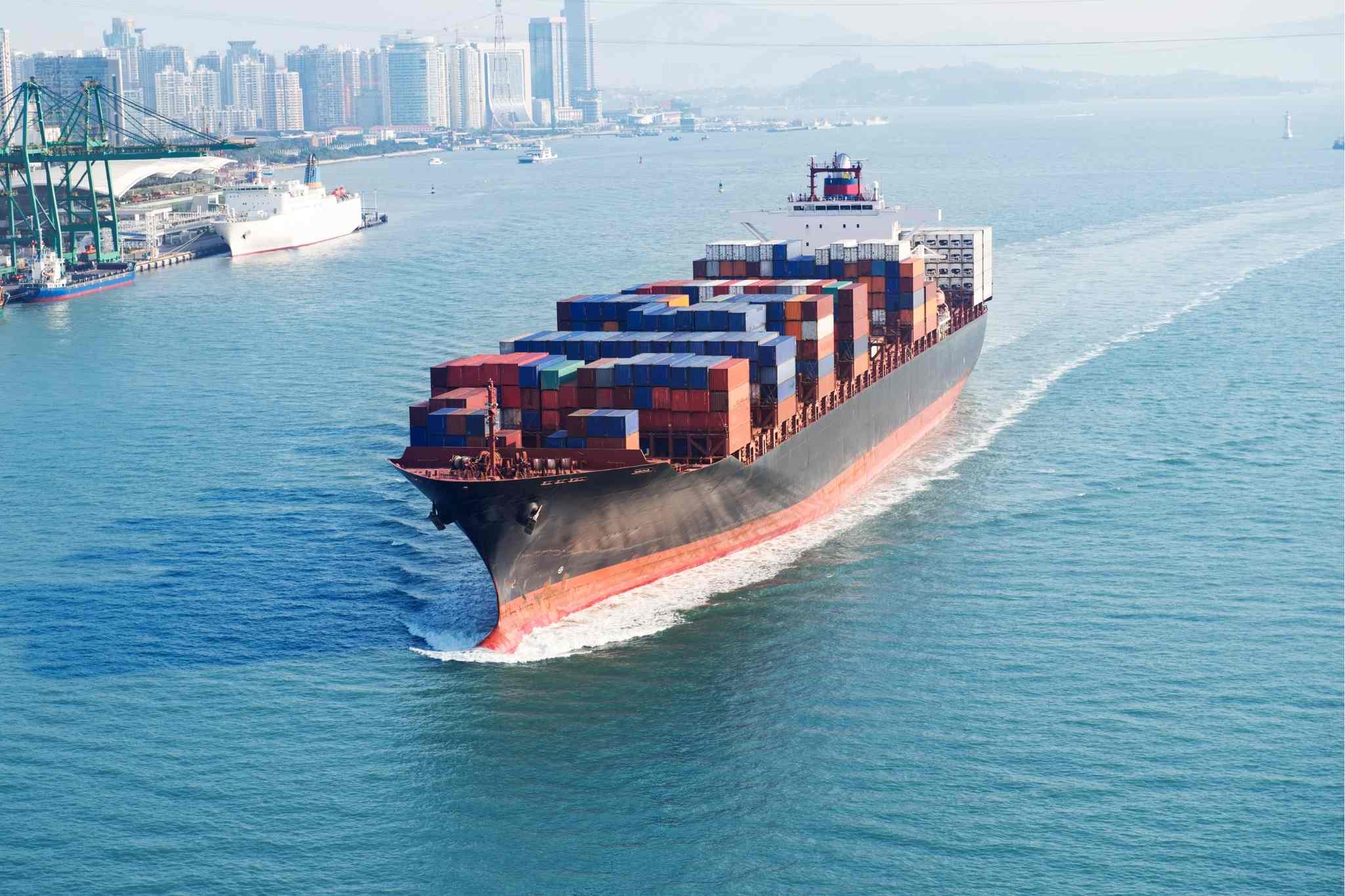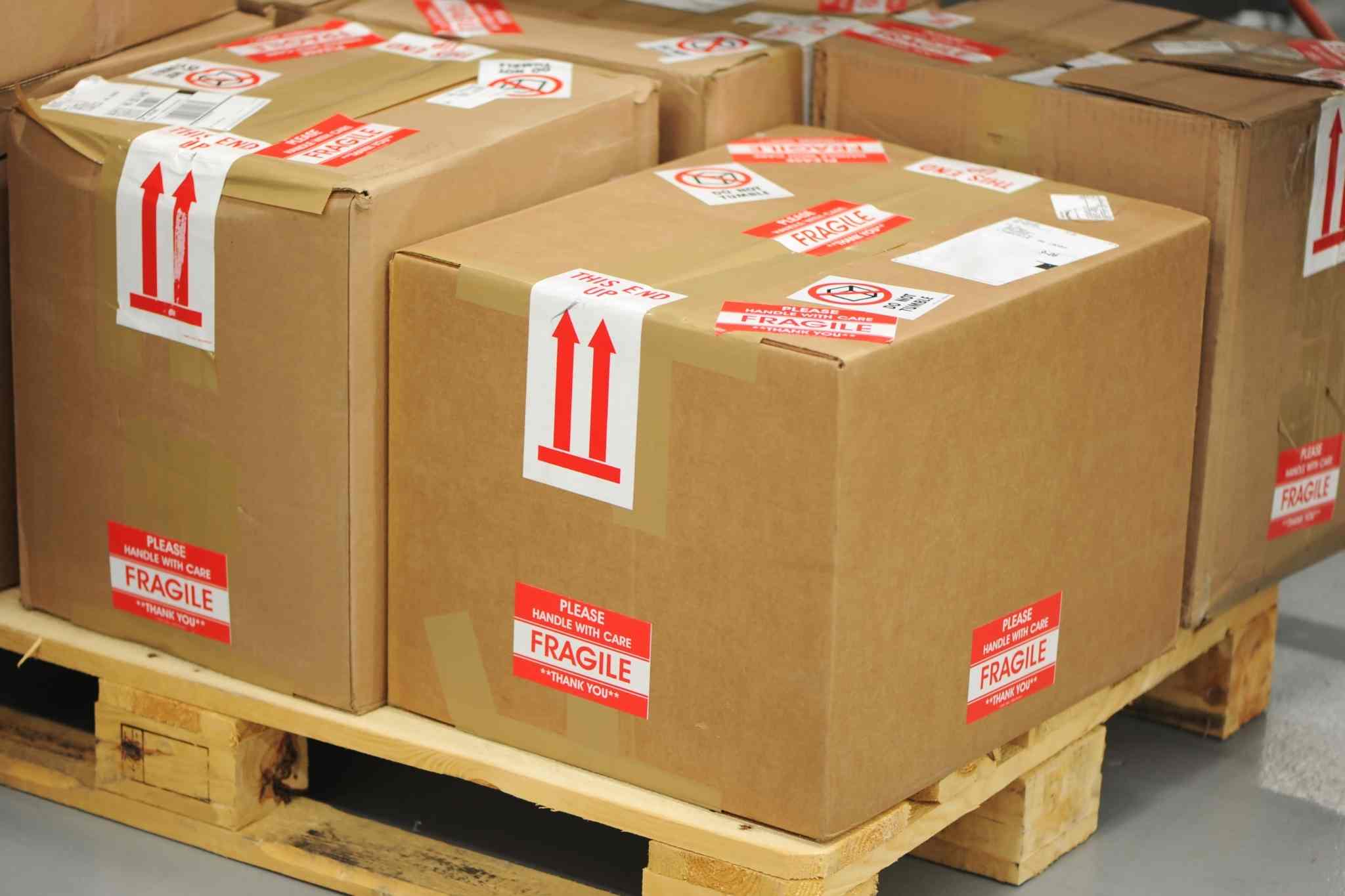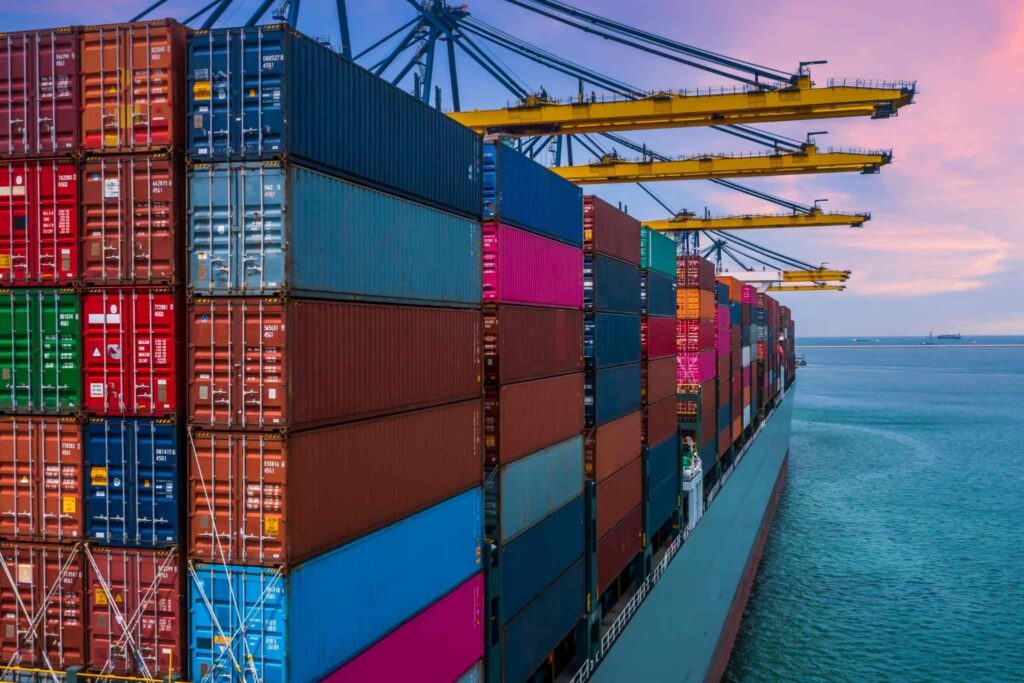Freight rates are a cornerstone of supply chain economics. They directly influence product pricing, logistics costs, and overall market efficiency. The question of when will freight rates go up remains top of mind for logistics managers and business owners across industries. Understanding how pricing models shift due to supply and demand is essential in today’s fast-moving economy.
Here’s how freight cost trends have evolved, where the market currently stands, and what to expect moving forward in 2025.
Table of Contents
Key Takeaways✔ Early increases in spot market rates suggest a potential shift toward higher freight pricing. ✔ Contract pricing has remained flat, as shippers prefer short-term agreements due to ongoing market uncertainty. ✔ Analysts view Q3 2025 as a likely turning point if back-to-school and early retail inventory drives more freight demand. ✔ The fourth quarter may push rates higher if holiday shipping surges and consumer spending rebounds. ✔ Geopolitical disruptions such as trade disputes and regional conflicts are contributing to higher supply chain disruption pricing. ✔ Renewed congestion at global ports could strain infrastructure and cause demand-driven rate fluctuation. ✔ A rise in oil prices could lead to increased diesel costs and push up current freight rates per mile. ✔ Labor negotiations and shortages in logistics hubs may lead to capacity constraints and faster shifts in freight cost trends. ✔ Changes in freight pricing often precede broader economic trends and may signal shifts in consumer activity and investment. ✔ Consistent weekly increases in spot rates and current freight rates per mile could indicate the start of a pricing rebound. |

Where Are Freight Rates Now? A Look at the Current Market
In 2024, current freight rates per mile stabilized after two years of intense fluctuations caused by shifting demand, fuel instability, and global economic headwinds. As carriers scaled back operations and shippers reassessed inventory strategies, pricing settled across most modes. Still, the industry continues to ask: when will freight rates go up?
While rates have dropped closer to pre-pandemic levels, they remain sensitive to disruption. Freight cost trends show that even small changes in market conditions can have immediate effects on pricing.
Despite these stabilizing factors, demand-driven rate fluctuation could return quickly if macroeconomic conditions improve. For example, a sharp rise in retail imports, a spike in fuel prices, or a natural disaster could all trigger rapid upward movement in pricing.
For now, shippers are benefiting from favorable conditions. But the freight market is inherently cyclical. While freight cost trends point to temporary relief, any tightening in capacity or increase in volume will likely revive the question: When will freight rates go up?
- Truckload rates stabilized across major segments: Dry van pricing averaged $1.62 per mile in 2024. However, refrigerated and flatbed segments remained more volatile due to their reliance on specialized equipment and demand in niche sectors like agriculture and construction.
- LTL pricing remained competitive: Carriers in the less-than-truckload sector optimized delivery routes and consolidated shipments to protect margins. These efficiencies allowed them to maintain reasonable rates despite softening demand.
- Ocean freight rates declined sharply: International container prices dropped significantly after the pandemic-driven spike. The recovery of global port infrastructure and balanced container flow helped bring costs down, though geopolitical risks and seasonal volume can still cause short-term increases.
- The 2024 peak season surcharge was unusually low: The typical Q3/Q4 rate hikes associated with holiday demand were minimal this year. This indicates that available capacity exceeded shipping needs, and retailers did not initiate large-scale restocking ahead of the holiday season.
- Fuel costs remained unpredictable: Although diesel prices moderated in early 2024, volatility persisted. Fuel surcharges continue to impact current freight rates per mile, and any resurgence in oil prices could quickly raise base freight costs.
- Consumer demand weakened: A drop in consumer spending in late 2023 and early 2024 led to reduced freight volume. This allowed carriers to maintain service levels without pushing rates higher and helped keep supply chain disruption pricing in check.
- Capacity adjustments shaped rate behavior: Many carriers reduced fleet size, trimmed service areas, or adjusted staffing to reduce overhead. While these changes improved operational efficiency, they didn’t yet tighten the market enough to drive rates upward.
- Rate competition intensified: Brokers and third-party logistics providers competed more aggressively for volume. This increased pricing transparency and gave shippers leverage when negotiating lanes, further suppressing upward movement in rates.
5 Key Factors That Could Drive Freight Rate Increases
Understanding what causes rate changes is critical for forecasting. The answer to when will freight rates go up lies in evaluating several core variables.
1. Fuel Prices
Diesel prices remain one of the most direct influencers on current freight rates per mile. Even minor increases can ripple through the pricing structure, leading to broader freight cost trends. If oil costs climb, freight carriers will inevitably pass along the increase to customers.
2. Carrier Capacity
When fleet sizes shrink or equipment shortages occur, pricing power shifts toward carriers. This imbalance leads to demand-driven rate fluctuation and often increases the peak season surcharge during tight windows. A return to constrained capacity could quickly shift pricing upward.
3. Labor Challenges
Driver shortages, wage inflation, and high turnover rates are pushing operational costs up, which in turn influences supply chain disruption pricing. Labor availability remains one of the most volatile cost components in the freight industry.
4. Regulatory Impact
New emissions standards, electronic logging devices (ELDs), and compliance measures increase fixed costs for carriers, contributing to future rate hikes. These regulations also influence freight cost trends across regions and force carriers to invest more in compliance infrastructure.
5. Demand Recovery
Consumer spending and retail restocking create surges in freight volume. A strong Q3 or Q4 rebound could reintroduce a significant peak season surcharge, signaling a clear instance of demand-driven rate fluctuation. If online retail and big-box distribution regain momentum, shippers may find themselves facing sharply higher rates.
Forecasts from Analysts: When Will Rates Rise Again?
Most industry analysts anticipate that freight rates will begin trending upward in the second half of 2025. However, the exact timeline for when will freight rates go up remains uncertain due to the unpredictable nature of global trade, consumer demand, and macroeconomic forces.
While some early signals are emerging, the outlook depends heavily on a mix of short-term disruptions and long-term structural shifts. The question when will freight rates go up remains tied to numerous variables, and the conditions for a rebound are forming. Supply-side constraints, rising fuel costs, and seasonal demand could align in late 2025 to push rates higher across the board.
- Spot market activity is showing early signs of recovery: Spot rates have ticked upward in isolated lanes, particularly those serving ports or major distribution hubs. Analysts view this as a potential precursor to broader market firming, although it has not yet carried over to contract pricing.
- Contract rate negotiations are still largely flat: Shippers remain hesitant to commit to higher long-term pricing. Many prefer short-term agreements or mini-bids, expecting that freight cost trends will remain stable for a few more quarters before rising.
- Q3 2025 is seen as a potential turning point: If back-to-school and early holiday inventory orders increase, demand could tighten capacity. Analysts believe this would set the stage for a return of the peak season surcharge later in the year.
- Q4 could accelerate pricing pressure: The fourth quarter typically drives a surge in e-commerce and retail shipping. Should consumer spending recover, capacity constraints may emerge quickly, pushing up current freight rates per mile and triggering broader increases across modes. Supporting this outlook, the American Trucking Associations (ATA) forecasts a 1.6% growth in truck volumes for 2025, with long-term projections showing a rise from 11.27 billion tons in 2024 to nearly 14 billion tons by 2035. This anticipated volume growth adds pressure to existing infrastructure and capacity planning, increasing the likelihood of upward pricing adjustments if demand accelerates as expected.
- Geopolitical factors are adding pressure: Conflicts, trade disputes, and cross-border restrictions continue to disrupt freight flows. These developments contribute to supply chain disruption pricing, forcing carriers to reroute freight, absorb additional compliance costs, or delay delivery windows.
- Global port congestion remains a wildcard: Although ports have largely normalized, any uptick in volume could strain infrastructure again. Delays at high-traffic terminals would lead to rerouting, longer lead times, and increased costs—amplifying demand-driven rate fluctuation.
- Fuel prices may reverse course: If crude oil prices rise due to geopolitical instability or production cuts, diesel costs will spike. This would directly impact current freight rates per mile, particularly in regions with fewer fuel-efficient carrier networks.
- Labor negotiations and shortages are looming risks: Upcoming union contract expirations in key logistics hubs may lead to labor disruptions. Delays or slowdowns at ports, rail yards, or distribution centers can shift capacity balances quickly, influencing freight cost trends more rapidly than expected.
- Freight pricing may act as a leading economic indicator: Analysts agree that changes in freight rates often precede broader economic movements. A sustained rise in rates may suggest a recovery in consumer demand and business investment, while ongoing stagnation could point to recessionary pressures.
- Consistent rate increases are a key signal to watch: Weekly upward movement in the spot market is typically the first indicator of a shift. Monitoring current freight rates per mile for sustained growth across multiple regions can provide an early warning that a pricing rebound is underway.

What Shippers and Carriers Should Do to Prepare
Proactive preparation is critical in a pricing environment shaped by uncertainty. Instead of waiting to learn exactly when will freight rates go up, supply chain professionals should focus on building agility into their operations. The ability to respond quickly to market shifts will provide a long-term advantage, even amid pricing volatility.
Technology remains essential on both sides of the transaction. Data-driven logistics platforms and analytics tools allow companies to identify rate shifts in real time and take action before market changes affect profitability.
While it may not be possible to pinpoint exactly when will freight rates go up, the key to long-term success is responsiveness. Rate volatility—driven by supply chain disruption pricing, consumer behavior, and capacity constraints—requires constant monitoring and readiness.
Shippers Should
- Secure flexible contracts that allow renegotiation based on market shifts: Freight markets are dynamic. Shippers should avoid rigid agreements that lock in fixed pricing for too long. Flexible contracts give companies room to respond to sudden freight cost trends and protect against market overcorrections.
- Use benchmarks such as current freight rates per mile to monitor performance: Real-time rate comparisons across lanes help logistics teams evaluate vendor performance and detect cost overruns. Tracking current freight rates per mile allows shippers to avoid overpaying during transitional markets.
- Track regional freight cost trends to anticipate lane-specific changes: National averages don’t always reflect local realities. Monitoring freight cost trends by lane and mode helps anticipate where rate pressure may rise first, such as in ports or urban congestion zones.
- Budget for a possible peak season surcharge well in advance of Q3: Even in down markets, Q3 and Q4 can introduce the peak season surcharge, particularly in e-commerce or retail-heavy lanes. Allocating funds early reduces the risk of budget overruns during critical shipping windows.
- Stay alert to signs of demand-driven rate fluctuation to act before rates spike: Monitoring volume trends, inventory levels, and consumer demand indicators allows shippers to secure capacity before demand-driven rate fluctuation triggers higher prices.
- Leverage transportation management systems (TMS) to centralize decision-making: TMS platforms help automate routing, consolidate shipments, and flag rate changes. These tools improve visibility and allow for faster reactions when supply chain disruption pricing escalates.
Carriers Should
- Diversify client bases to minimize exposure to a single segment: Over-reliance on one industry—such as retail or automotive—can expose carriers to seasonal volatility. A broader client base offers more pricing stability during economic shifts.
- Monitor regulatory updates that could influence supply chain disruption pricing: Rules on emissions, hours-of-service, and safety standards can increase costs and reduce available capacity. Staying ahead of these changes enables better forecasting of supply chain disruption pricing.
- Maintain fuel-efficient fleets to protect margins against peak season surcharge spikes: Rising diesel costs often accompany seasonal demand surges. Fuel efficiency investments help carriers remain profitable even when the peak season surcharge returns.
- Prepare contingency plans to deal with unpredictable freight cost trends: Disruptions such as strikes, weather events, or political unrest can impact rates instantly. Carriers should develop alternate routing strategies and capacity reserves to navigate such freight cost trends without sacrificing service.
- Use historical trends in current freight rates per mile to forecast optimal pricing: Reviewing year-over-year changes in current freight rates per mile can reveal seasonal patterns and guide strategic pricing decisions in upcoming quarters.
- Invest in load visibility and predictive analytics: Technology that provides real-time tracking and predictive insights enables early identification of demand-driven rate fluctuation, improving service and profitability.
Frequently Asked Questions (FAQs)
What is the outlook for freight rates?
The outlook suggests that freight rates may begin rising in the second half of 2025. Spot market activity is showing early signs of recovery, while contract rates remain flat for now. Analysts expect factors like seasonal demand, fuel costs, and capacity changes to drive future increases.
Are freight rates rising?
Freight rates have stabilized after a period of volatility, but are not yet rising consistently. Some spot lanes are showing slight increases, indicating a possible shift. However, widespread upward movement is expected only if demand grows and capacity tightens.
How to forecast freight cost?
To forecast freight cost, monitor factors such as fuel prices, consumer demand, carrier capacity, and regulatory changes. Using historical data and real-time rate indexes can improve accuracy. Tracking market signals like spot rate trends helps anticipate shifts before they occur.
How to get the best freight rate?
To secure the best freight rate, compare quotes from multiple carriers and use a transportation management system (TMS). Building long-term relationships and negotiating flexible contracts can offer more stability. Timing shipments during low-demand periods also helps reduce costs.
Who sets freight rates?
Freight rates are primarily set by carriers based on factors like distance, fuel costs, demand, and equipment availability. Market forces and competition also influence pricing. In some cases, brokers and 3PLs negotiate rates on behalf of shippers.

Partner with 3PL Logistics By Best in NYC to Stay Ahead of Freight Market Changes!
Don’t wait until the market shifts—take control of your shipping strategy today with a trusted partner. 3PL Logistics By Best in New York City offers tailored freight solutions designed to help businesses navigate rising rates, seasonal fluctuations, and complex logistics demands. Whether you’re optimizing your supply chain or securing better rates, our expert team brings the local knowledge and nationwide reach to get it done efficiently.
If you’re a shipper or business owner in New York City, now is the time to future-proof your freight strategy. 3PL Logistics By Best provides full-service third-party logistics support, including warehousing, transportation, and fulfillment. With flexible plans and transparent pricing, 3PL Logistics By Best helps businesses stay competitive in a changing freight landscape.
Take the next step—contact 3PL Logistics By Best today.

